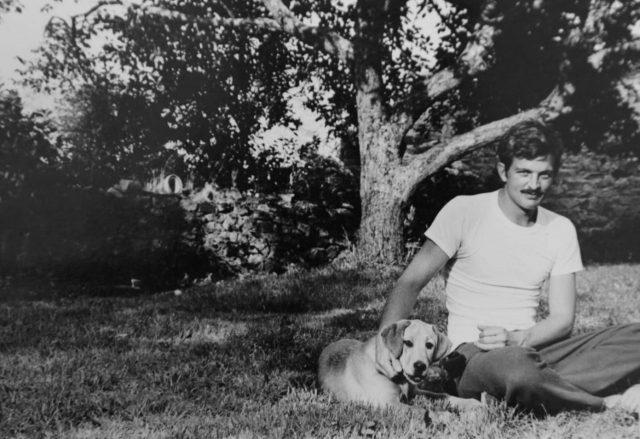
What is Armagnac?
Armagnac, a living eau-de-vie
To understand the true nature of Armagnac is to accept to challenge the established vision.
Made from a regional white wine distilled in a special still, Armagnac retains enough living matter to express, like wine, the characteristics of a year and evolve over time. For in the Armagnac brandy that flows from the 54° still, the organic, mineral and vegetable elements that make up the distinctive aspect of the fresh wine and the aromatic expression of its history still persist.
Unlike spirits such as Cognac (distilled at 74°), Gin or Vodka (distilled at 90°) whose living organisms have been burned by the distillation process, Armagnac continues its maturation after leaving the still. It is part of the culture of the great wines which sublimate with time in the cellar.
Like them, the Gascon brandy finds its soul in the depths of its terroir, whose complexity is expressed through the roots of the vine and the grapes, then through the wine and its transmutation into brandy. To taste Armagnac is to discover this living material, which is the result of the meeting of the earth, the sky and man.
Château Arton Armagnacs embody this renewed vision of Armagnac. Our know-how, from the vine to the wine and to the Armagnac, dictates the meticulousness of our gestures, allowing us to raise a very good wine to raise an exceptional Armagnac, each of these stages being carried out at the estate. The relationship between one and the other seems crucial to us. It finds all its power in the practice of the vintage.
Expressing the living character of Armagnac means highlighting its specific annual imprint. The vintage is its most accomplished expression. Armagnac is the only brandy that can fully justify this.
Armagnac distillation, an exception in Gascony
Distilling Armagnac means extracting from the wine its most subtle, most evanescent part. Its essence! Preserving all the aromatic richness of the wine is a unique know-how that requires a specific still, specific to the Gascony region and used exclusively for the regional brandy.
The traditional distillation is done with a still called “armagnacais” whose patent was registered by Jacques Tuillière, a potter from Auch, in 1818. This copper still, with columns and continuous distillation, allows for a slow and regular distillation at low degrees to preserve more of the wine’s components than a double boiler still. There are about a hundred of these stills in the region. Most of them are mobile, moving from estate to estate during the “flame” season, which extends from the harvest to March 31 of the following year.
The distillation is carried out by a distiller who watches over the wine day and night, next to his still, to slowly transform the wine into eau-de-vie. His know-how is essential for the latter to be loaded with the best aromas.
The fresh wine (15°) rises in the first column of the still, then goes down in the second one where it flows through trays. At the bottom, it bubbles over the boiler, releasing vapors that rise and meet the fresh wine that descends into the tray column. The vapors are enriched with the aromas of the wine and the history of its year to extract its quintessence.
When the vapors reach saturation, when they have collected all that there is to collect, they flow through a pipe that winds through the heart of the first column, that of the fresh wine, cool and condense, giving birth to the white Armagnac (54°).
Housed in oak barrels, this white brandy will continue its maturation, taking on the color of the wood and enriching its aromas to become Armagnac!
At the Domaine d’Arton, the Armagnac distillation reveals an exaltation of the wine and of the Gascon nature which signs and typifies our Armagnacs.

Armagnac... 700 years of history!
From the memory of man, Gascony is a land of vines! They are represented on the mosaics of the Gallo-Roman villas of the region. Grapes grow in abundance and wine is an agricultural activity that supports the country.
The production of Armagnac has been documented since 1310, when Vital Dufour, prior of the town of Eauze, described in his “Livre très utile pour garder la santé et rester en bonne forme” the advantages of a brandy known as aygue ardente. Armagnac appeared thanks to the meeting of two civilizations: that of the Arab world and its still, and that of the Christian world and its monks who planted vines. It does not yet bear the name of today. It was then an apothecary’s remedy.
In 1461 it was found on the market of Saint Sever. It became a drink that was appreciated for its gustatory qualities, a drink called “le merveilleux”. Historically, Armagnac is a precious brandy, elaborated in margin of the wine production of the region.
At the end of the 19th century, the phylloxera aphid devastated the French vineyards, not sparing Armagnac, the first wine-producing region in France. It decimated the Folle Blanche, the historic grape variety of the regional brandy, putting an end to the golden age of the Gers countryside. The vines of Bas-Armagnac survived because the sandy soils of this region preserved them from phylloxera. Those of the Haut-Armagnac did not resist and disappeared completely from the map.
Patrick de Montal believes in the virtues of this forgotten terroir. In 1991, he was the first to replant vines on the plateau of Lectoure to resurrect the Armagnac of the region. Finding the thread of history, he gives back to the Haut-Armagnac its lights of yesteryear.
